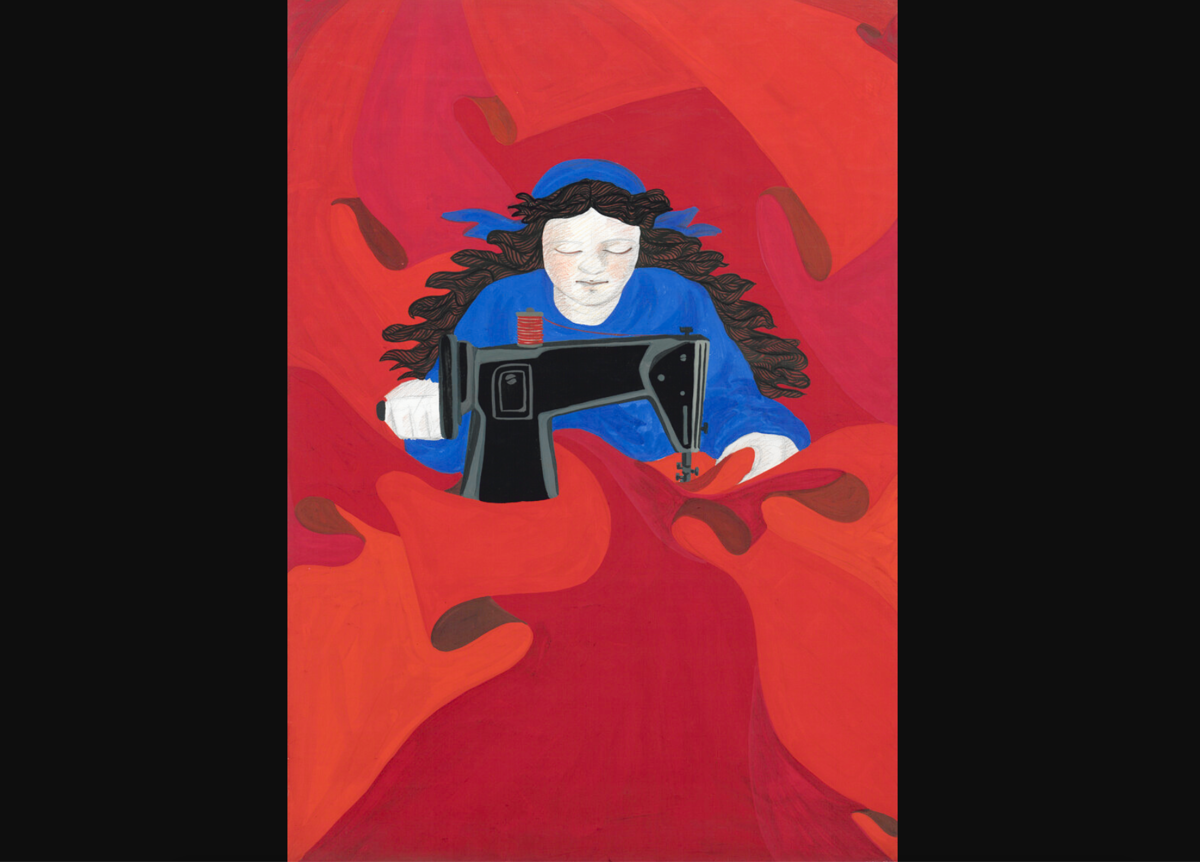Who Sews the Red Flags?
January 27–May 20, 2024
Goebenstraße 2–10
32052 Herford
Germany
Hours: Tuesday–Sunday 11am–6pm,
Wednesday 11am–8pm
T +49 5221 9944300
info@marta-herford.de
Artists: Nuray Demir, Semra Ertan, Mehmet Güler, Gülsün Karamustafa, Asimina Paradissa, Monika Sieveking, Gerdt Marian Siewert, Nil Yalter, Serpil Yeter.
The first exhibition of 2024 at Marta Herford is the group show Annem işçi—Who Sews the Red Flags? in the Lippold Gallery. “Annem işçi” (My mother is a worker) tells of “guest workers” and artists cooperating to combat discrimination, racism, and violence based on feminist and political alliances of the 1970s. The exhibition brings together films, paintings, prints, photographs, an installation, and texts, some of which were produced in West Germany, which was then still a young nation, but their subject matter is still topical today. It asks what foreignness means half a century later and in which roles we live in the community. The project, which presents nine artists, including Nil Yalter, Gülsün Karamustafa, and Monika Sieveking, is curated by Gürsoy Doğtaş.
On the one hand, in their works the invited artists tell their own stories about being migrant workers, about feelings of yearning, foreignness, and collegiality like Asimina Paradissa. She herself came to Germany as a ‘guest worker’ in the 1960s, and her photographs from that time give a vivid and intimate impression of her and her peers’ lives. Monika Sieveking and Gerdt Marian Siewert on the other, look at events from the outside and solidarize with the workers through their social-realist paintings, that lays attention to labor, identity and ways of empowerment.
The alliance of artists and workers movements in Turkey is prominent in the work 1977 First of May (Woman Constantly Sewing Red Flags with Her Sewing Machine)” (1977) by Gülsün Karamustafa. It shows a seamstress at her sewing machine, surrounded by red fabric. With this poster, the artist is alluding to workers’ protests against the rising neo-fascist movement in Istanbul. Karamustafa’s work revolves around central themes such as nation, patriarchy, class, and inland migration in modern Turkey while establishing a unique political aesthetic. This powerful moment of activism also characterizes the mural Rote Zukunft (Red Future, 2024) by the artist Serpil Yeter that she designed especially for the exhibition and painted directly in the exhibition space. It shows the rebellion of a worker in a textile factory. She defines her task as an artist as showing the possibilities of coexistence and contributing to respect of differences between cultures.
The poet Semra Ertan probed the contradictory, sometimes unspoken expectations of her milieu, asymmetries of social power, and gender inequality as well as her status as a so-called foreigner through her poetry. In the untitled poem shown in the exhibition, which was written in Turkish, Ertan declared her solidarity with the working class and honored the achievements of her parents.
In her work Nil Yalter addresses migrant workers in Germany, Belgium and France. In the series “Turkish Immigrants” (1977), she lends migrant workers a voice but also through photography and drawing gives them a face. Yalter examines the connections of visibility and power, as well as the structures of labor and gender, as in her series “Neuenkirchen” (1975). This is also the topic of Mehmet Güler’s portfolio of prints “Das Schicksal der Frauen” (Fate of Women, 1977). The etchings show women working in the rural landscape of his homeland, while the artist himself had decided to move permanently to Germany that same year.
Nuray Demir’s work together (2024) adds a contemporary perspective to the matter. “It consists of workers’ overalls applied to the wall, a recreation of a break-room situation with chairs, left tea glasses and a Turkish translation of The Communist Manifesto, and a mop whose head has been replaced by a red flag. With the installative interventions Demir is alluding to migrant workers and their rights in the German labor system. The artist’s works are characterized by her critical look at social exclusion and complex hierarchical relationships.



